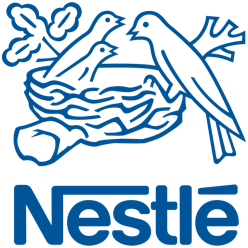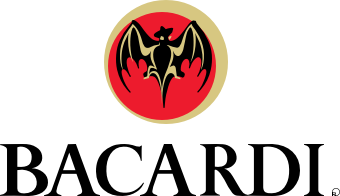
Cultural Tribes
T
The truth is, content saturation is here. Competition for attention is only getting more fierce. And over-targeting is damaging trust in brands.
The days of using demographics alone for audience segmentation are over. The reliance on the invasive use of personal data is untenable and becoming illegal.
Your new reality is here - and the technology and methodology are here to help. It's time to make a decision. Carry on down the path you're on, creating ever more content, trying to target people using personally identifiable data, with creative decisions based on gut feeling? Or choose to do something different?
Tribes add the all-important cultural layer to your audience view.
Why Cultural Tribes?
Tribes are collections of people, brought together by shared passions, values, and behaviors. They’re flowing, changing entities, which embody different cultural identities. Each tribe is unique. They’re discovered by looking at live data on how they behave and what content they engage with, rather than just what they say in surveys or focus groups.
By understanding tribes, marketers unearth what content their audience consumes, where they spend their time online, and what topics are actually important to them. This knowledge enables brands to be more relevant in culture and allows them to connect more effectively with their audience. As a result, brands can both recruit new audiences and grow existing segments.
Identifying tribes: Bringing together AI and human analytical rigor
There’s no fixed starting point for identifying tribes. They can be built from your existing audience demographics, a newly researched aspirational target audience, or created entirely from scratch. Tribes are not a replacement for traditional segmentation approaches: they are an enhancement - embedding meaningful cultural cues into your audience segments.
Using the Codec platform, the audience view starting point is then enriched with data generated through AI, which breaks down mass internet audiences into meaningful groups of people. The AI identifies the unique characteristics of the four elements for each tribe and relies on statistically significant numbers to draw its analysis. It analyzes over 6.7 million unique content interactions daily, which simply can’t be done through the human eye.
These meaningful groups of people are then brought to life as tribes. This stage relies on both the technology and human analytical rigor to reveal who they are, what they like, and how they communicate. The identified tribes are then presented to brands, who can use this insight to distinguish themselves from their competition, engage their existing audiences, and grow new audience connections.
What is a tribe?
The Four Elements of Every Tribe
Defining your tribes is a science. The methodology is underpinned by four elements, which contribute to creating a holistic understanding of each tribe. The four elements can be recognizable to people not in the tribe, but they are only meaningful to people in the tribe.
Without this methodology and the technology that enables it, it’s not possible to define tribes. Accurately identifying your tribes relies on using AI to identify the four elements, what they are, and how they represent themselves online:
Behaviors
Values
Symbols
Social Organizations
Behaviors
These are the patterns and norms displayed by the tribe, which are created and enforced by cultural reinforcement or rejection. Behaviors communicate a tribe's symbols.
Digital signals: Likes, Comments, Shares, Subscribes
Values
The values are the expectations by which a tribe behaves. These are informed and guided by culturally generated ideas of right and wrong, as defined by the tribe.
Digital signals: Topics, Interests
Move beyond demographic segmentation.
Discover how you can identify, track, and engage your tribes.
Symbols
The symbols are the motifs, images, and cultural cues that have a particular resonance to a specific tribe. They are instantly recognizable and do not typically require any explanation for people within the tribe.
Digital signals: Highly-Engaged Content
Social Organization
Social organizations structured members into smaller numbers to meet culture-specific requirements. They determine who sits towards the center of the tribe.
Digital signals: Influencers, Media Networks
How tribes grow
Tribes grow, develop, and evolve through the interaction between these four elements.
Every content interaction reinforces the cultural network of the tribe.
Behaviors
Symbols
Social Organizations
Values
"Building tribes through Codec enabled us to gain a deeper understanding of our audience and their content consumption which formed the basis of our content strategy."
L’Oreal NYX
Why Demographics are No Longer Enough
It’s time to adapt
Most marketers rely on traditional, demographic-based insights to define their audience segments.
These approaches are useful and still have value in our modern, digital economy. However, enhancing demographics with a greater understanding of unique tribes shines a light on more nuanced groups that exist within our broad target audiences.
We need to adopt these new ways of thinking about our audiences because demographics alone do not show us real people and real behaviors.
Not convinced? Take two people born in 1948. Both grew up in England, and are married with children. They are both wealthy, successful in business, enjoy Winter holidays in the alps, and like dogs. But one is Prince Charles, and the other is Ozzy Osbourne.
A demographic or persona-driven approach to segmentation is a pen sketch. And, a persona is an excellent structure to talk about a generic group of people, but you won't find a single person that matches the description.
Both born in 1948, grew up in England, are married with children and like dogs.
Why the time to act is now
Alongside this, macro changes in society mean demographics alone no longer give us the depth and detail we require to segment audiences in a meaningful way. These changes include:
1
2
3
To stay relevant, modern marketers need insight into the cultural values and passions that drive their tribes. This insight enables them to recruit new audiences and grow market share
How to Get Started?
Getting started
Identifying your tribes starts by bringing together the parts that make up your existing broad audience segments. This information creates a starting point for the AI:

Customer Segments
Existing research (eg TGI) with content behaviors, Existing content strategy or Detailed non-demographic segmentation
Cultural Targets
Broader context of engagement, e.g. cultural triggersBrand Engagers
Areas of leverage for the brand
Competitive Audience
How you compare to your competitors on topics and valuesWe blend machine learning and human insight to explore cultural networks
Enhance Your Audience View with All-Important Cultural Elements
Broad Audience
Codec insights
A more sophisticated audience view
The initial audience starts nebulous:
The AI looks at the data, grouping together clusters of content interactions.
It’s looking for statistically relevant thresholds of interactions that are thematically similar, for example, the same topic, cultural leader, or influencer. It tracks the flow of content (symbols) through time to build a complete picture:
Tribes are discovered by looking for areas of high engagement and interaction:
Tribes are then analyzed to see where a brand has a relevant voice and can authentically activate - and how they can distinguish themselves from the competition in these areas.
"Codec’s technology delivered us insight in 3 days in what would normally take an agency 8 weeks."
Unilever
The AI Behind the Platform
AI: Putting Audience First
AI helps us put audiences first. The technology enables us to identify tribes that are bound together based on their shared values, passions, and behaviors.
Machine learning and AI interpret relevant third-party content by profiling images, text, and videos. It understands, in granular detail, precisely what aspects of the content resonate with a specific tribe. Importantly, as part of this process, the AI identifies the unique characteristics of the four elements for each tribe - and relies on statistically significant numbers to draw its analysis.
Codec AI Tracks:
325,319 content engagements a week per tribe
6.3k + tribes tracked
79,970 authors per week
The Codec Platform brings insight to life
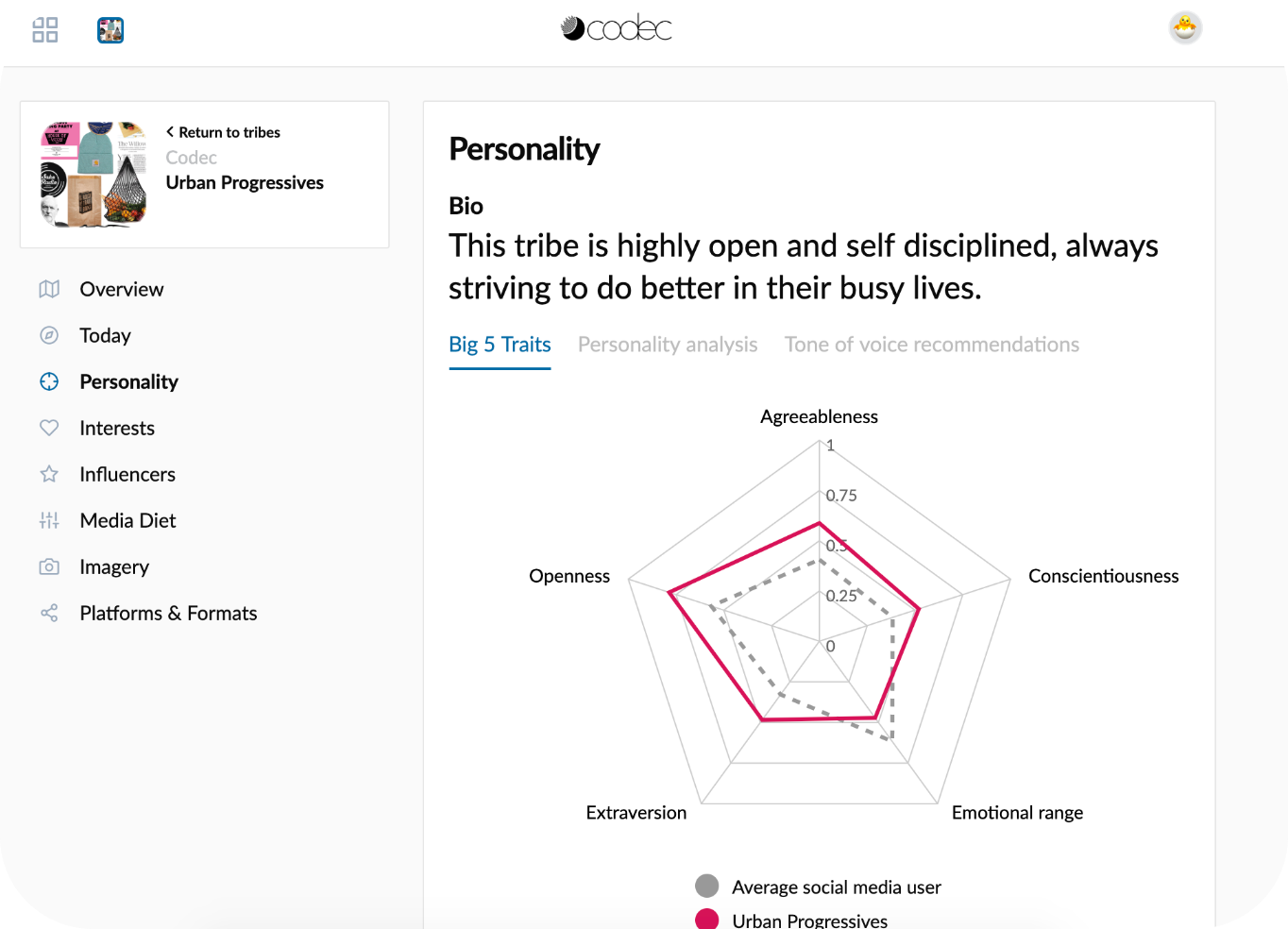
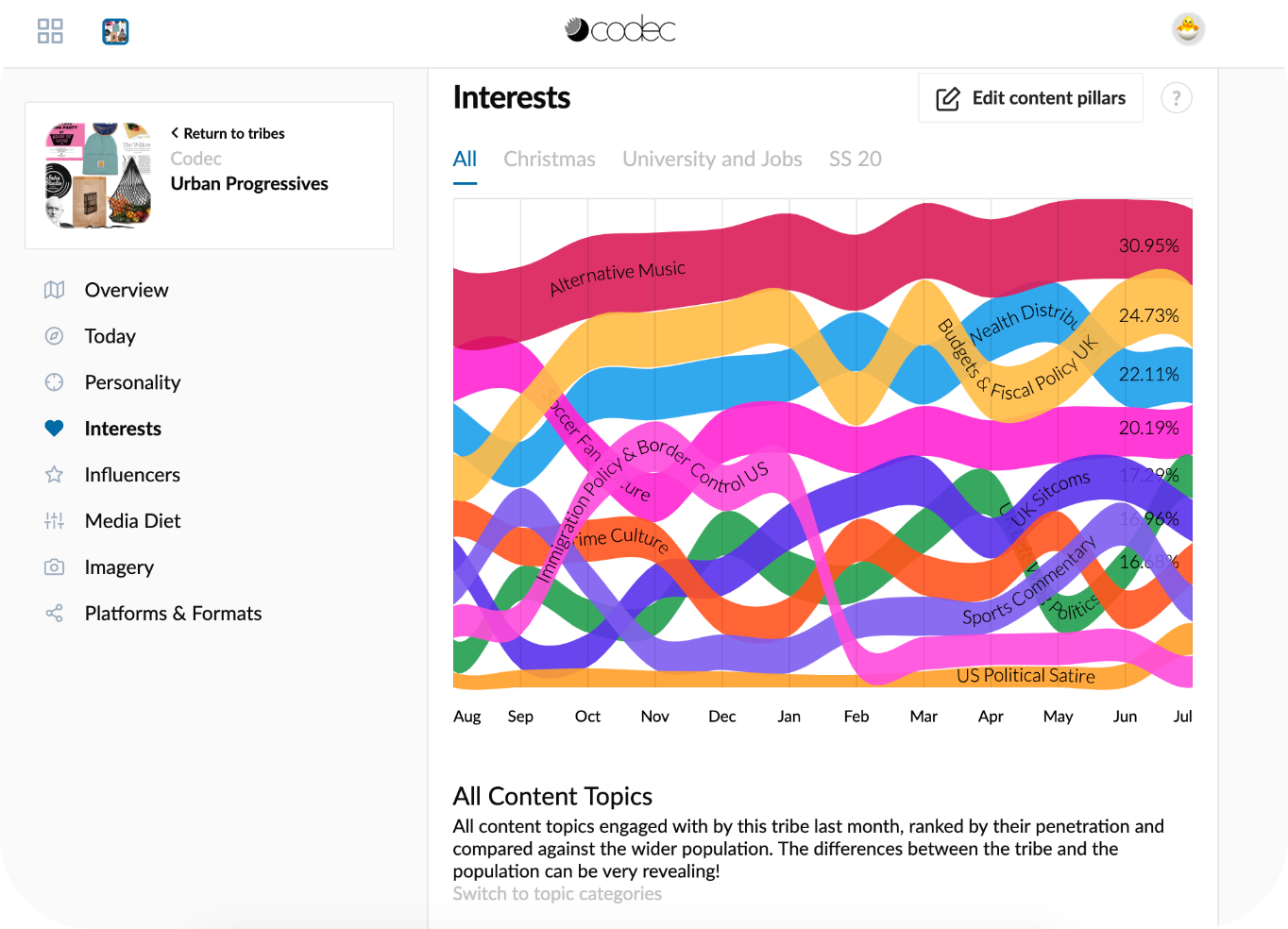
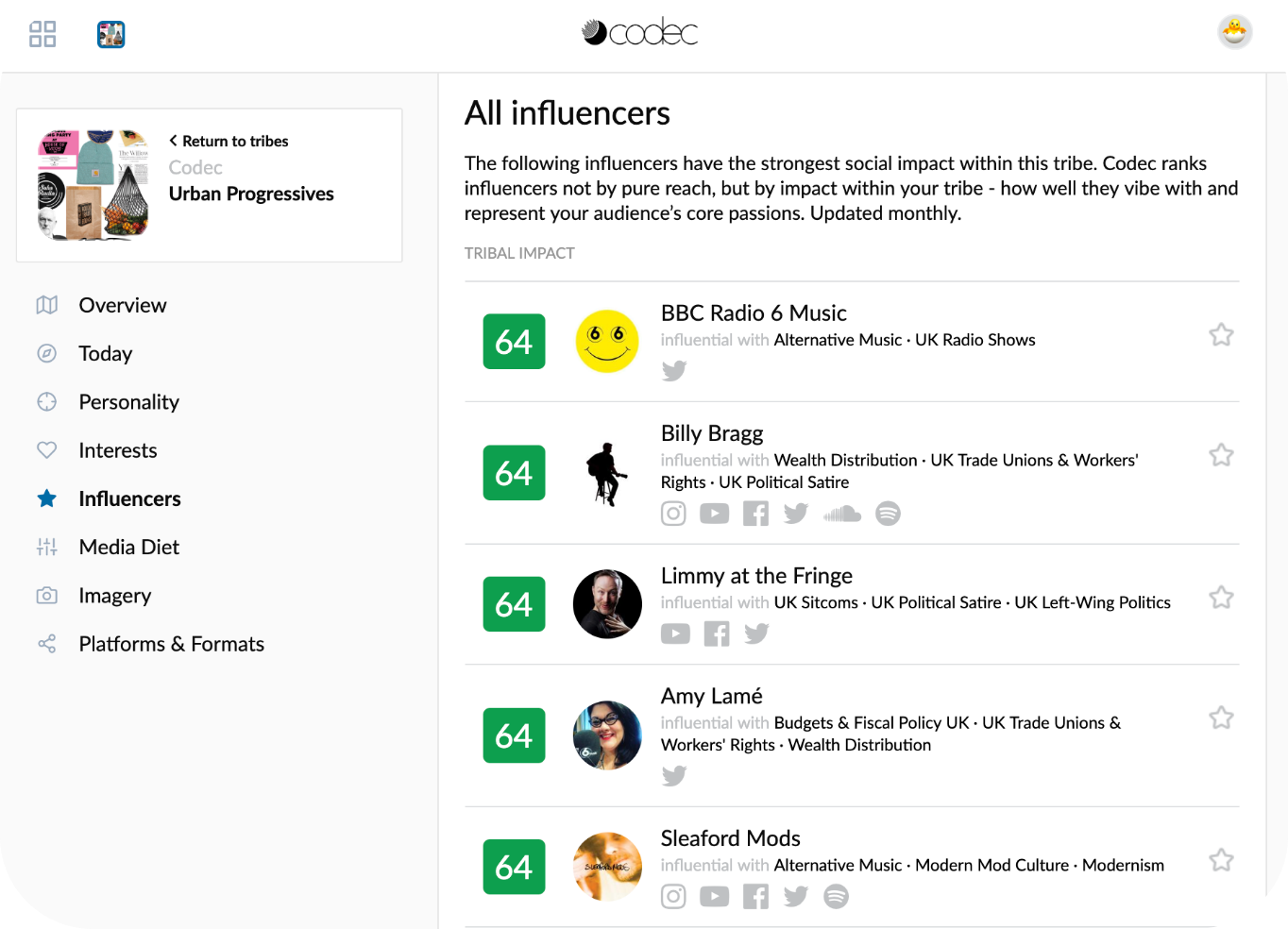
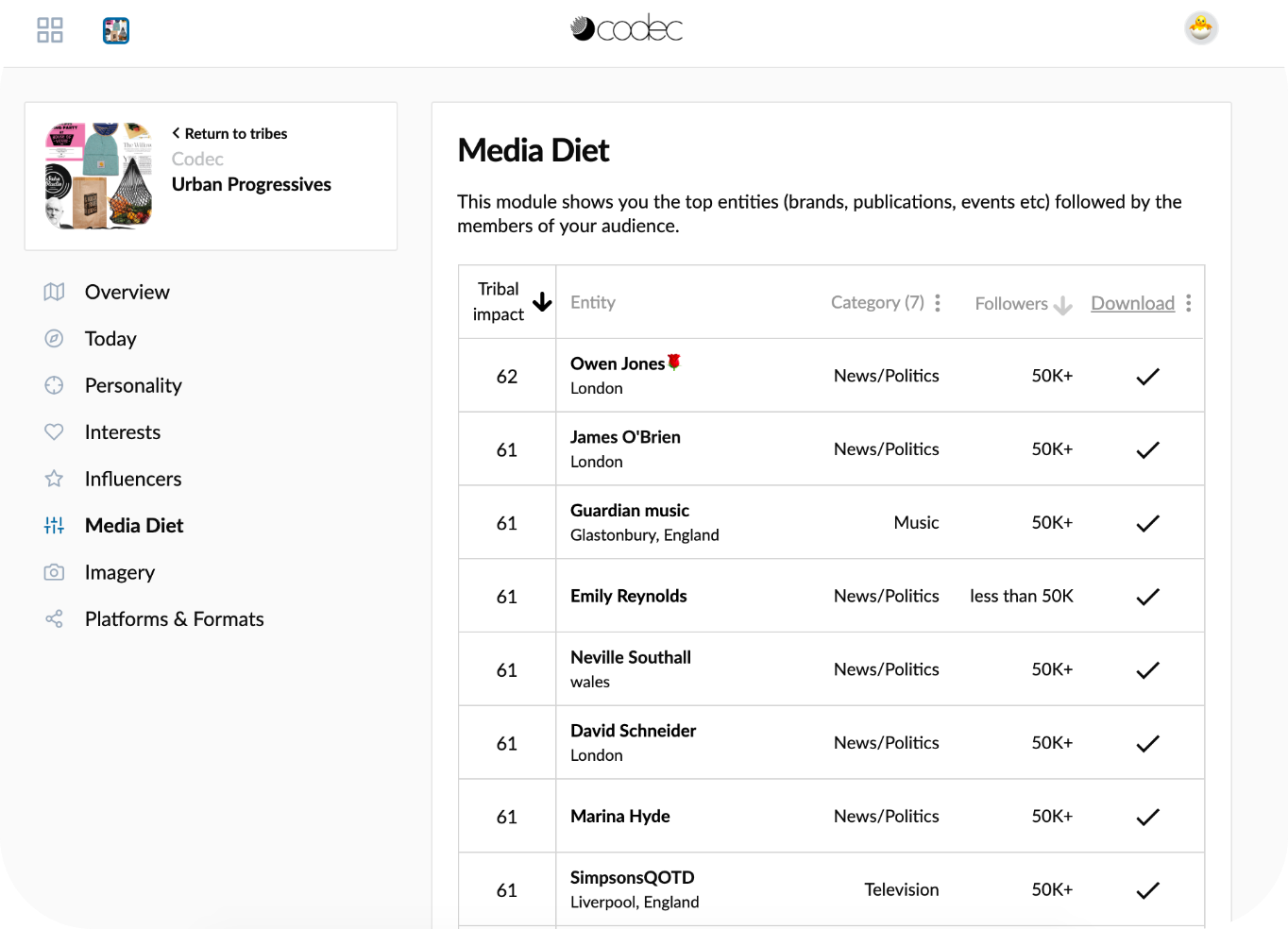
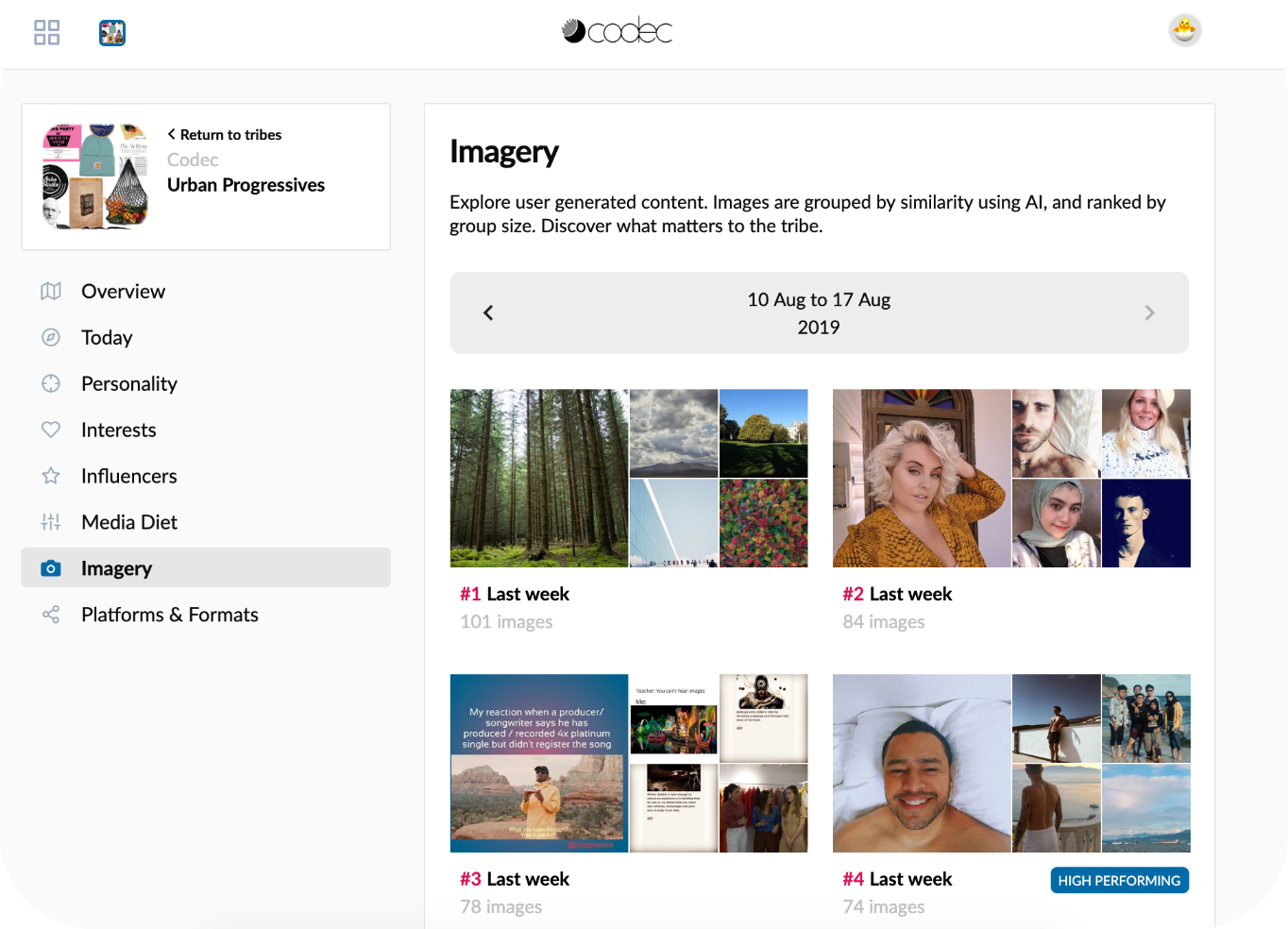
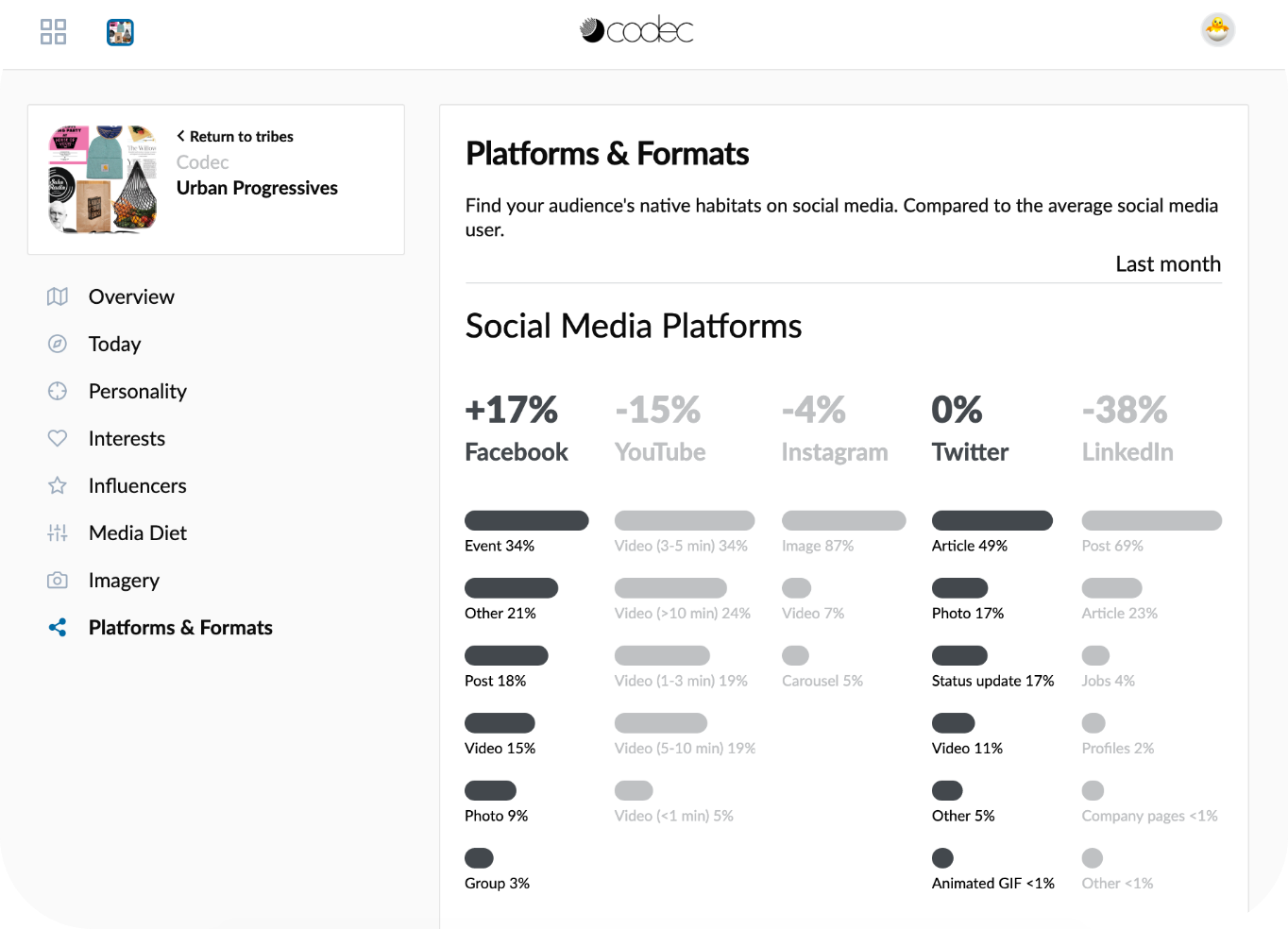

The AI works by identifying tribes within a mass audience. These tribes are then brought to life using the technology to reveal who they are, what they like, and how they communicate. With these insights, brands can distinguish themselves from their competitors, engage their existing audiences, and grow new audience connections.
About Codec
About Codec
Codec’s overarching mission is to help brands be relevant in culture. Our award-winning AI technology analyses billions of online content interactions to break down mass audiences into meaningful groups of people who share passions, interests, values, and leaders. We help brands discover the specific cultural networks (tribes) that will help them grow, by understanding how and where to engage them.
Codec insights fuel objective decision making across the entire marketing workflow so brands can use a consistent data-source across different phases of the marketing journey. This helps align internal teams and agency partners, driving joined-up thinking from strategy and ideation right through to media activation.
Working at global, regional and local levels, our platform and accompanying content and media services are utilized by the world’s leading brand groups including Unilever, L’Oreal, Danone, Reckitt Benckiser, and Mondelez.



